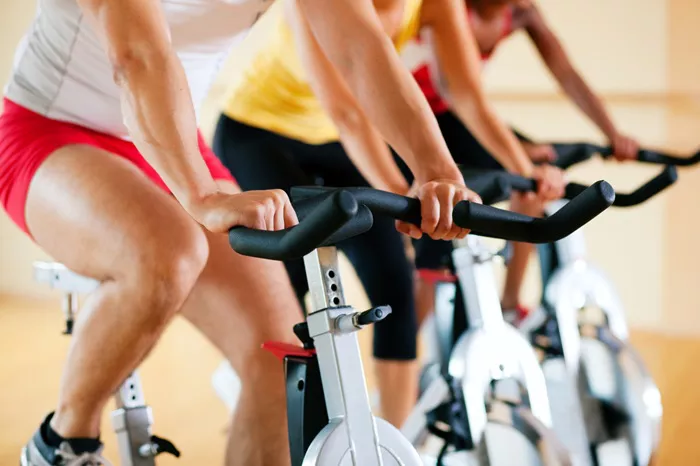Cardiovascular fitness is a crucial aspect of overall health, reflecting the efficiency of the heart, lungs, and blood vessels in delivering oxygen to the body during physical activity. For beginners, improving cardiovascular fitness can seem daunting, but with the right approach, it can be an enjoyable and rewarding journey. This article will provide a comprehensive guide on how to enhance cardiovascular fitness, focusing on methods, exercises, and tips suitable for those just starting their fitness journey.
The Importance of Cardiovascular Fitness
Cardiovascular fitness is essential for numerous reasons:
1. Health Benefits: Regular cardiovascular exercise strengthens the heart, lowers blood pressure, improves cholesterol levels, and reduces the risk of chronic diseases such as heart disease and diabetes.
2. Increased Stamina: Enhancing cardiovascular fitness increases stamina, allowing individuals to perform daily activities with greater ease and less fatigue.
3. Weight Management: Cardiovascular exercise is effective for burning calories, making it a vital component of any weight loss or maintenance plan.
4. Mental Health: Engaging in regular cardio workouts can reduce symptoms of anxiety and depression, improve mood, and enhance overall mental well-being.
5. Improved Sleep: Regular physical activity, including cardio, can lead to better sleep quality and duration.
Getting Started with Cardiovascular Fitness
For beginners, the key to improving cardiovascular fitness is to start slowly and gradually increase the intensity and duration of workouts. Here are steps to get started:
1. Consult a Healthcare Professional: Before beginning any exercise program, it’s advisable to consult with a healthcare provider, especially if there are pre-existing health conditions.
2. Set Realistic Goals: Establish achievable fitness goals. Whether it’s walking for 10 minutes without stopping or completing a 5K, having clear objectives can help maintain motivation.
3. Choose Enjoyable Activities: Select cardiovascular exercises that are enjoyable. This could include walking, cycling, swimming, dancing, or group fitness classes. Enjoyment is crucial for consistency.
4. Create a Schedule: Aim for at least 150 minutes of moderate-intensity aerobic activity each week, as recommended by health organizations. This can be broken down into manageable sessions throughout the week.
5. Listen to Your Body: Pay attention to how your body responds to exercise. It’s normal to feel some discomfort, but sharp pain or excessive fatigue is a sign to stop and rest.
See Also: How Walking Improves Cardiovascular Health?
Types of Cardiovascular Exercises
Cardiovascular exercises can be categorized into various types, each offering unique benefits. Here are some effective options for beginners:
1. Walking
Walking is one of the simplest and most accessible forms of cardiovascular exercise. It requires no special equipment and can be done almost anywhere.
How to Start: Begin with brisk walking for 10-15 minutes, gradually increasing the duration as stamina improves. Aim for 30 minutes of walking most days of the week.
Tips: Use a pedometer or smartphone app to track steps, aiming for 10,000 steps per day as a long-term goal.
2. Cycling
Cycling is an excellent low-impact exercise that can be done outdoors or on a stationary bike.
How to Start: Begin with short rides of 15-20 minutes at a comfortable pace, gradually increasing the duration and intensity.
Tips: Join a cycling class or find a cycling buddy to make it more enjoyable and motivating.
3. Swimming
Swimming provides a full-body workout and is particularly beneficial for those with joint issues or injuries.
How to Start: Start with 15-20 minutes of swimming at a comfortable pace, focusing on different strokes to engage various muscle groups.
Tips: Consider joining a local swim class to learn proper techniques and stay motivated.
4. Dancing
Dancing is a fun way to improve cardiovascular fitness while enjoying music.
How to Start: Join a dance class or follow online dance workouts for beginners, aiming for 30 minutes of dancing several times a week.
Tips: Explore different styles of dance, such as Zumba, hip-hop, or ballroom, to find what you enjoy most.
5. Group Fitness Classes
Many gyms offer group fitness classes that focus on cardiovascular training, such as aerobics, kickboxing, or spinning.
How to Start: Attend a beginner class to learn the basics and gradually increase participation as confidence grows.
Tips: Group classes provide social support and motivation, making it easier to stick with a fitness routine.
6. High-Intensity Interval Training (HIIT)
HIIT involves short bursts of intense exercise followed by rest or low-intensity periods. While it may be more challenging, it is effective for improving cardiovascular fitness in a shorter amount of time.
How to Start: Beginners should start with simple intervals, such by 40 seconds of rest, repeating for 10-15 minutes.
Tips: As fitness improves, increase the intensity and duration of the high-intensity intervals.
Establishing a Routine
To effectively improve cardiovascular fitness, establishing a consistent routine is essential. Here are some strategies to help build a sustainable routine:
1. Incorporate Variety: Mix different types of cardiovascular exercises to prevent boredom and work different muscle groups. This can include alternating between walking, cycling, and swimming throughout the week.
2. Use a Fitness Tracker: Consider using a fitness tracker to monitor progress, set goals, and stay motivated.
3. Schedule Workouts: Treat workouts like appointments by scheduling them into your calendar. This increases accountability and ensures consistency.
4. Find a Workout Buddy: Exercising with a friend can make workouts more enjoyable and provide motivation to stick with the routine.
5. Set Short-Term Goals: Establish short-term goals, such as increasing workout duration or intensity each week. Celebrate achievements to maintain motivation.
Warm-Up and Cool Down
Warming up and cooling down are crucial components of any workout routine.
Warm-Up: Spend 5-10 minutes engaging in light activities, such as walking or dynamic stretches, to prepare the body for exercise and reduce the risk of injury.
Cool Down: After completing a workout, cool down with gentle stretching and slow movements for 5-10 minutes. This helps to gradually lower heart rate and prevent muscle stiffness.
Monitoring Progress
Tracking progress is vital for staying motivated and recognizing improvements in cardiovascular fitness. Here are some methods to monitor progress:
1. Keep a Workout Journal: Record workouts, including duration, intensity, and how you felt during each session. This helps to identify patterns and areas for improvement.
2. Track Heart Rate: Monitoring heart rate during workouts can provide insights into fitness levels. Aim to exercise within a target heart rate zone for optimal benefits.
3. Take Fitness Assessments: Periodically assess fitness levels through activities such as timed walks or runs. This helps to measure improvements over time.
4. Set New Goals: As fitness improves, set new goals to continue challenging yourself. This could include training for a local race or increasing workout intensity.
Staying Motivated
Staying motivated can be challenging, especially for beginners. Here are some strategies to maintain motivation:
1. Join a Community: Engage with fitness communities, whether online or in-person, for support and encouragement.
2. Reward Yourself: Set up a reward system for achieving fitness milestones, such as treating yourself to new workout gear or a relaxing spa day.
3. Visualize Success: Visualize your fitness goals and the benefits of achieving them. This mental imagery can enhance motivation and commitment.
4. Stay Flexible: Life can be unpredictable, so remain flexible with your routine. If you miss a workout, don’t be discouraged—simply get back on track as soon as possible.
Common Challenges and Solutions
Beginners may face various challenges when trying to improve cardiovascular fitness. Here are some common obstacles and potential solutions:
1. Lack of Time: Busy schedules can make it difficult to find time for exercise. Consider shorter, high-intensity workouts or break sessions into smaller increments throughout the day.
2. Boredom: Repetitive routines can lead to boredom. Incorporate variety by trying new activities, changing workout locations, or joining classes.
3. Plateaus: Progress may stall after a period of improvement. To overcome plateaus, increase workout intensity, try new exercises, or adjust the duration of workouts.
4. Injury: Beginners may be prone to injuries due to improper form or overexertion. Focus on proper techniques, listen to your body, and allow adequate rest and recovery.
Conclusion
Improving cardiovascular fitness is a journey that requires patience, consistency, and a positive mindset. By starting slowly, choosing enjoyable activities, and establishing a routine, beginners can make significant strides in their cardiovascular health. Remember to celebrate progress, stay flexible, and seek support from communities or fitness professionals. With dedication and the right approach, anyone can enhance their cardiovascular fitness and enjoy the numerous benefits that come with it.
[inline_related_posts title=”You Might Be Interested In” title_align=”left” style=”list” number=”6″ align=”none” ids=”11035,10897,10793″ by=”categories” orderby=”rand” order=”DESC” hide_thumb=”no” thumb_right=”no” views=”no” date=”yes” grid_columns=”2″ post_type=”” tax=””]
































